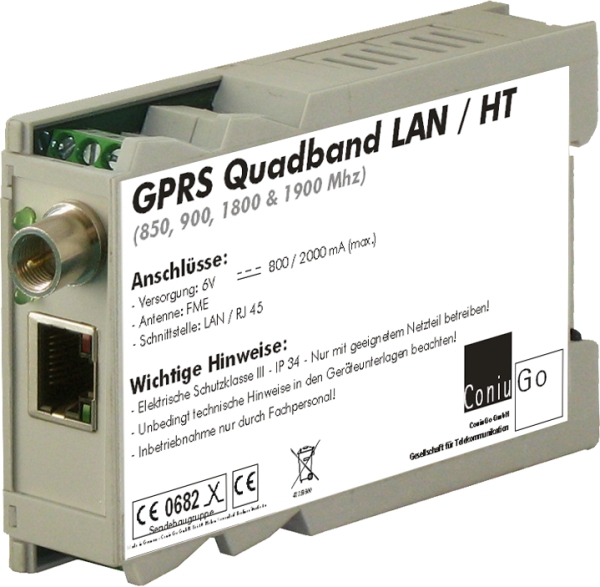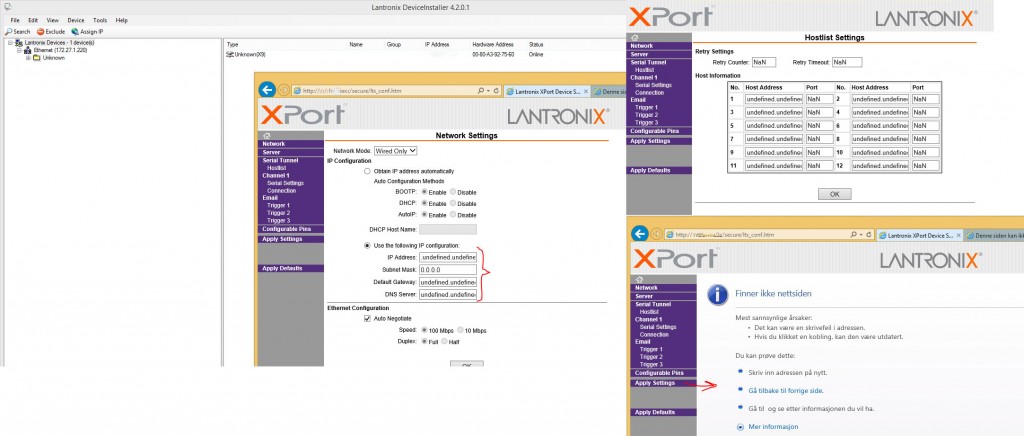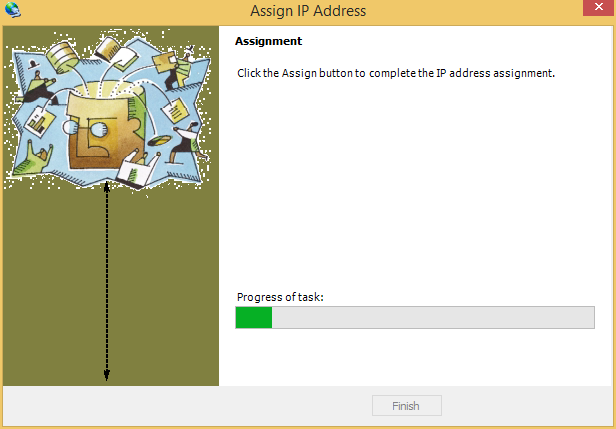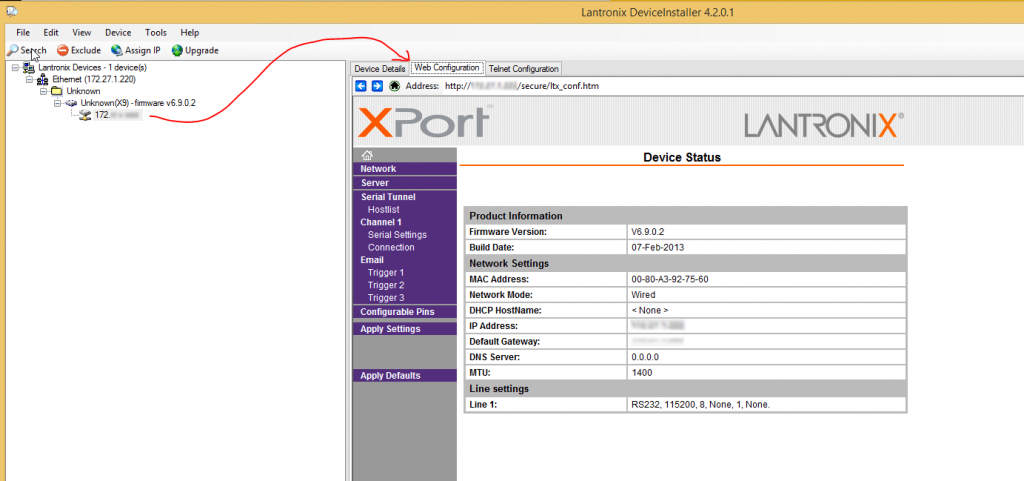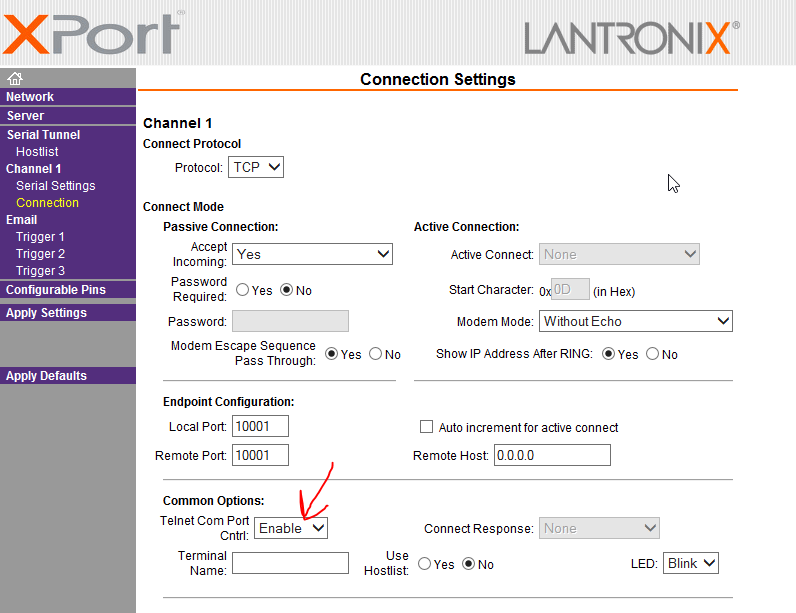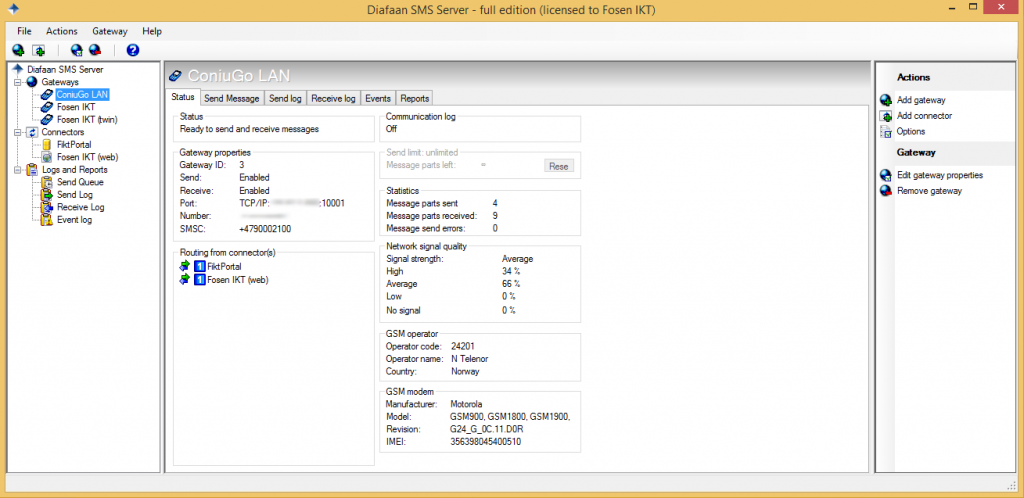We decided to try the ConiuGo GSM LAN Modem (dead link – removed) at my workplace, as the USB-devices we use now, is a bit tricky running on virtual machines and the virtual COM-ports isn’t always stable.
Diafaan has also written a review about this modem. This article is an expanded version of the Diafaan review, with all the details I struggled with.
See also my post about installing Diafaan SMS Gatway.
Ordering the GSM Modem
I found the device number from the ConiuGo website (dead link – removed), 700100182 – and searched for this number in Conrad Electronic International store.
The description for 700100182 at the Conrad webshop is «ConiuGo 700100182 GPRS Quad-Band Modem USB» which is wrong! I had to send a few messages back and forward with them to confirm this – but now, a couple of weeks later, they still haven’t changed the description.
I also ordered antenna, antenna-adapter and power-supply under accessories in the Conrad webshop. None of them fits the GSM Modem! I was a bit skeptical of the antenna before I ordered, so I bought another one at the same time. That antenna works perfectly and have a magnet on the bottom for easy mount on a rack-cabinet.
The power supply had a plug that I had to cut and split the wires to connect it.
Stopped at customs
The package came to my office with a sticker that said «UFORTOLLET GODS. Denne forsendelsen MÅ LIGGE UÅPNET inntil fortolling er foretatt av Posten…». Translated it means basically that I cannot open the package before the toll/custom is completed. The post office does not store the packages, they send it directly to the receiver. So if I open the package before receiving the customs-invoice, I can’t complain if the invoice is wrong.
I opened the package anyway, after I called the postal office and got the package value confirmed – as it would have been a bit sad if the postal office had written a 0 extra or something 🙂
So to the fun part – setting up the actual device!
Documentation
First of all; The manual in the box is in German – They could have saved themselves the paper! The following CD had some random English/German language.
I used some time to find the correct documentation for my product. It’s was located here: X:\Dokumentationen – documentations\GPRS UMTS GSM Fernwirkrouter LAN.
Changing IP
I plugged the device in my laptop and set a static IP to 192.168.0.8, as Diafaan wrote that the default IP was 192.168.0.19. Then I installed the DeviceInstaller from the CD that was included in the package (X:\Software\DeviceInstaller). After install was completed I opened the program from the Windows start-menu, and clicked search to devices. I found one Unknown device with IP 10.10.200.102.
Not sure why I got a different default IP than Diafaan…
I had some problems as DeviceInstaller stopped responding a lot.
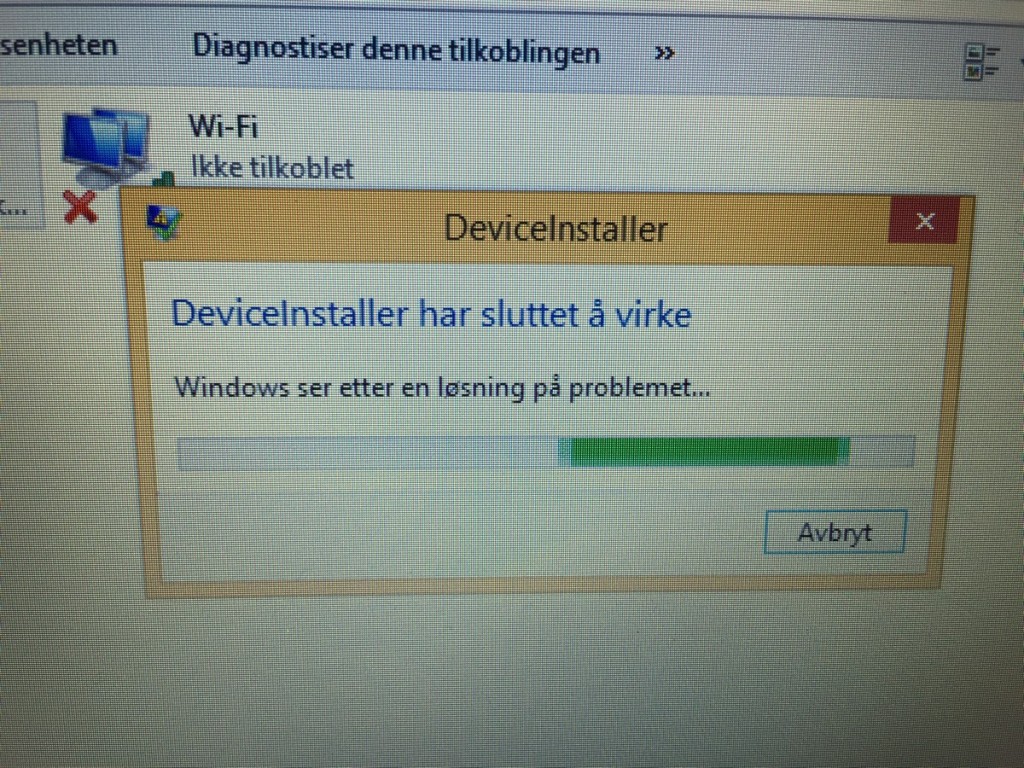
So I tried setting my computer in the 10.10.200.xxx network and configure it by the web-gui, but this was NOT successful. The webgui was mostly blank or with udefined/NaN text in every input and gave 404 error when trying to apply settings.
After a few tries, I finally got to set the IP with DeviceInstaller, before it crashed again.
After setting the IP, I could use DeviceInstaller from the server running the GSM Gateway Software.
Configure the device
I actually had to access the webpage through the DeviceInstaller, to manage the device. I had to expand all in the navigation to the left, to get the tabs on the right side.
In the Web-configuration I had to set Telnet Com Port Cntrl to DISABLE, to get Diafaan to connect with the device. In this page you can also set the port if you want to use a different one. Remember to push «Apply Settings» in the navigation to save and restart the device.
Connecting to the ConiuGo with Diafaan
I added the Gateway with the wizard, but it always failed when I pushed the Test-button. In the first tries, it was because of wrong port-number. But after entering the correct port-number, it failed when trying to enter PIN.
After some trying and failing, I restarted the server, unplugged the power of the ConiuGo modem, took the simcard out, and inserted it again, before I plugged in the power. Somehow this just did the trick.
Conclusion
The GPRS GSM Quadband LAN Modem HT is really easy to set up, if you know how to! My biggest problem was the unstable software, DeviceInstaller – I think this was mostly my client, as it hasn’t stopped working on the server yet.
The next problem was trying to understand why the webgui didn’t work on the GSM LAN modem directly from the web-browser. I still don’t…
The last problem was the documentation from ConiuGo. All the documentation are there, both on the CD and on their webpage – but it’s all collected under one place and it’s very hard to find. It would have been a lot easier if it was possible to just click on the product at ConiuGo webpage and get all the documentation for that specific product.
But in the end, this isn’t a consumer product that you buy by walking in to the nearest electronic store – So some trying and failing are mandatory.

